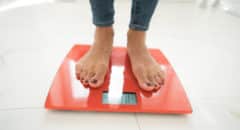
Walking is often overlooked as a workout, but it’s one of the most powerful and accessible forms of exercise for both weight loss and overall health. Unlike high-intensity workouts that can feel intimidating or hard to sustain, walking is simple, low-impact, and sustainable—making it the perfect exercise for nearly everyone.
Have you tried walking for weight loss? Beyond burning calories, walking delivers a long list of health benefits:
-
Reduces the risk of heart disease and stroke
-
Lowers blood pressure and cholesterol levels
-
Improves heart and lung function
-
Boosts mood and eases symptoms of anxiety and depression
-
Helps with memory and may reduce the risk of Alzheimer’s disease
-
Supports healthy weight management by burning fat and boosting metabolism
The best part? Walking requires nothing more than comfortable shoes and a willingness to start moving. Whether you’re trying to slim down, improve your health, or just clear your head, walking can help you get there—one step at a time.
RELATED: 5 Easy Ways To Get Your 10,000 Steps Daily
How Walking Helps You Lose Weight
Many people think of walking as “too easy” to make a difference, but that couldn’t be further from the truth. Here’s why walking works so well for weight loss:
It Burns Calories (Without Feeling Miserable)
A brisk 30-minute walk can burn between 120–170 calories, depending on your pace and body weight. Add in longer or more frequent walks, and those calories add up quickly.
It Increases Fat Burning
Walking taps into fat stores for energy, especially when you walk at a moderate, steady pace for 30 minutes or longer. Over time, this helps reduce body fat—including stubborn belly fat.

It Reduces Stress and Cortisol Levels
High stress can cause your body to store fat, particularly around your midsection. Walking is a natural stress-reliever, helping regulate cortisol levels and promoting healthier fat distribution.
It’s Easy to Stick With Long-Term
Unlike extreme diets or punishing workouts, walking is something you can do every day. Consistency is the most important factor in weight loss, and walking fits easily into daily life.
It Boosts Metabolism Through Muscle Engagement
Walking with good form (using arms, engaging your core, and striding with purpose) activates more muscles than you might think. The more muscle you engage, the more calories you burn—even after your walk ends.
RELATED: Need Inspiration? Here Are 9 Reasons To Work Out Regularly
8 Easy Ways to Burn More Calories While Walking
Want to maximize results? Here are eight proven strategies:
8. Skip killer hills
Walking up steep inclines might feel like the best workout, but slowing to a crawl lowers your calorie burn. Instead, aim for moderate hills that let you maintain pace.
7. Use your arms
Pump your bent arms vigorously—this increases speed, burns more calories, and engages your upper body.
6. Set visual goals
Choose a stop sign, bench, or tree and speed up until you reach it. Then slow down for the same distance before repeating. This is an easy form of interval training.
5. Wipe the pavement
Roll from heel to toe with every step. When you push off, imagine wiping gum off your shoe—this engages calves, hamstrings, and glutes for more calorie burn.
4. Go shoe shopping
Shoes with flexible soles and minimal cushioning in the front allow you to push off more powerfully, boosting stride efficiency.

3. Stand tall
Good posture makes a huge difference. Align your spine, keep your shoulders back, and engage your core—this lets your back and glutes power you forward.
2. Raise your rate
Use a fitness tracker or heart rate monitor to stay in your fat-burning zone. If you can talk but not sing, you’re likely at the right intensity.
1. Add strength training moves
Every few minutes, stop for lunges, squats, or push-ups. This builds muscle, raises metabolism, and increases calorie burn long after your walk ends.
RELATED: Toned Thighs…In 15 Minutes!
Walking for Weight Loss: FAQs
How long should I walk to lose weight?
For general health, aim for at least 150 minutes per week (about 30 minutes a day, 5 days a week). For weight loss, walking 45–60 minutes most days is ideal.
How fast should I walk to burn fat?
A brisk pace is best. You should feel slightly out of breath but still able to hold a conversation. For most people, that’s about 3.5–4 mph.
How many calories does walking burn?
-
30 minutes at 3 mph = ~120 calories (150-lb person)
-
30 minutes at 4 mph = ~170 calories (150-lb person)
Heavier people burn more calories; lighter people burn fewer.
Does walking reduce belly fat?
Yes. Studies show regular brisk walking lowers visceral fat—the deep abdominal fat linked to heart disease and diabetes.
Is walking better in the morning or evening?
Both work! Morning walks can boost energy and set a positive tone for the day, while evening walks help reduce stress and improve digestion after meals.
Can I lose weight by walking without dieting?
Walking burns calories, but pairing it with a balanced diet creates faster results. A 500-calorie daily deficit (through diet and walking combined) can lead to about one pound of weight loss per week.
What tools can I use to track walking?
-
Pedometers & step counters – measure steps easily
-
Fitness apps (Strava, MapMyWalk, Pacer) – track distance and calories
-
Wearables (Fitbit, Apple Watch, Garmin) – monitor heart rate and progress

7-Day Walking Plan for Weight Loss
Here’s a sample weekly walking schedule to help you get started:
Day 1 – Brisk Walk
30 minutes at a steady pace
Day 2 – Intervals
5-min warm-up → alternate 1 min fast / 2 min brisk for 25 min → 5-min cool down
Day 3 – Long Walk
45–60 minutes brisk walking
Day 4 – Active Recovery
20–30 minutes slow walk or light stretching
Day 5 – Hill Walk
30–40 minutes on moderate inclines (treadmill or outdoors)
Day 6 – Intervals + Strength
30 minutes brisk walking with 5 stops for squats, lunges, or push-ups
Day 7 – Long Walk or Social Walk
60 minutes at a conversational pace (with a friend or group)
Repeat weekly, increasing distance and intensity as your fitness improves.
RELATED: Transitioning Your Workout From Outdoor To Indoor
Final Thoughts
Walking may seem simple, but it’s one of the most effective and sustainable exercises for weight loss. It burns calories, reduces belly fat, lowers stress, and improves long-term health. By adding small tweaks—like using intervals, improving posture, or incorporating strength moves—you can maximize your results.
Best of all, walking is enjoyable and easy to fit into daily life. Whether it’s a quick stroll around the block, a power walk during lunch, or a long weekend hike, every step gets you closer to better health and your weight loss goals.
So lace up your shoes, set a goal, and start walking your way to a healthier, leaner you.








